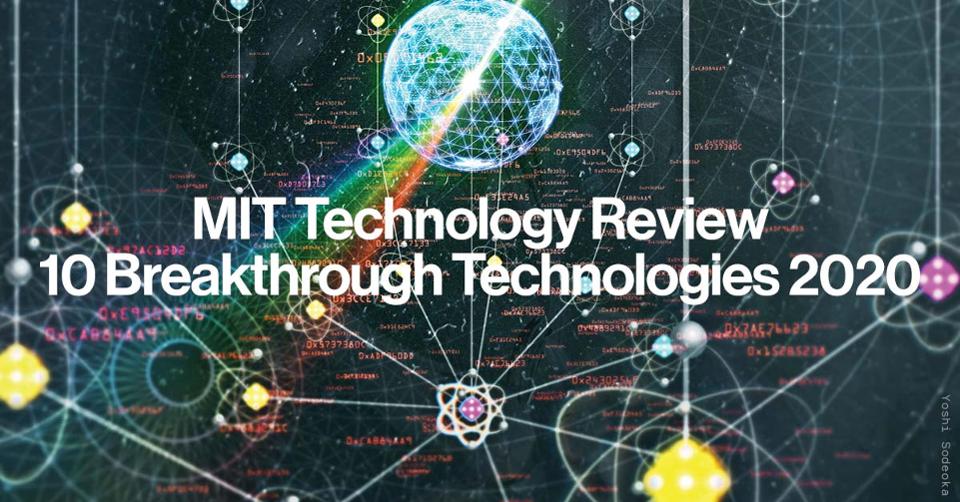In my last post, I described the first five breakthrough technologies listed in the March/April edition of The MIT Technology Review. In this post, I’m doing the remainder of the Top Ten. (In parentheses, after each section, I’ve noted the writer for that article.)
Satellite Mega-Constellations: This article starts with a fairly startling statement: “More than 3.5 billion people in the worl d still lack internet access.” That’s nearly half of the world’s population who don’t have access to the information, communication, goods, services, and entertainment that the internet offers. (Of course, they aren’t subjected to the junk, either.) SpaceX and OneWeb are working to remedy this problem by sending thousands of satellites into space that will provide broadband connections. This is feasible because the satellites have gotten smaller and less costly to launch. In the space shuttle days, a communications satellite cost nearly $25K per pound to put in orbit. And they weighed a lot more than today’s satellites. SpaceX is now sending trimmed down satellites into space that cost a mere $1,240 per pound. The upside is bringing access to the world’s poorest populations. The fear is that there’s nothing policing this increase in orbital traffic, which could result in a lot of collisions. (Neel V. Patel)
d still lack internet access.” That’s nearly half of the world’s population who don’t have access to the information, communication, goods, services, and entertainment that the internet offers. (Of course, they aren’t subjected to the junk, either.) SpaceX and OneWeb are working to remedy this problem by sending thousands of satellites into space that will provide broadband connections. This is feasible because the satellites have gotten smaller and less costly to launch. In the space shuttle days, a communications satellite cost nearly $25K per pound to put in orbit. And they weighed a lot more than today’s satellites. SpaceX is now sending trimmed down satellites into space that cost a mere $1,240 per pound. The upside is bringing access to the world’s poorest populations. The fear is that there’s nothing policing this increase in orbital traffic, which could result in a lot of collisions. (Neel V. Patel)
Quantum Supremacy: Quantum computers hold a lot of promise, and there are hopes that at some point they’ll be able to solve problems at a faster rate than “classical” supercomputers. (I’m old enough to remember when there was nothing “classic” about supercomputers…) Two areas where quantum computers are expected to really shine are the ability to break cryptographic codes and simulate molecule behavior to speed up new drug and materials discovery. We’re not there yet – the article puts availability 5-10 years out – but last fall, Google achieved “quantum supremacy”, claiming that a 53 qubit quantum computer took 3 minutes to make a calculation that, in Google’s estimate, “would have taken the world’s biggest supercomputer 10,000 years, or 1.5 billion times as long.” Not so fast -literally- competitor IBM hollered. They believe the “speedup would be a thousand-fold at best.” Whatever the magnitude, we’re on our way to the world in which quantum computers will be ready to be used for something useful. (Gideon Lichfield)
Tiny AI: Even if we’re not consciously aware of AI in our lives, it’s there. Anyone doing much by way of search knows that it’s gotten a lot smarter when it comes to understanding what you’re looking for. And that’s just one example. As AI has gotten smarter, it’s been using more and more data, more and more computing power, and more and more cloud-based services. That’s a lot of carbon emissions, and a lot of potential loss of privacy. But there are now specialized AI chips that enable deep learning to occur locally, without calling on the cloud. E.g., Siri’s speech recognition now runs on the iPhone. Services that are taken care of on your smartphone will be faster and more private. There are a number of potential issues (the ones noted in the article are surveillance and deep fake videos), but hopefully these will be worked through sooner rather than later. (Karen Hao)
Differential Privacy: 2020 is the year of the US census. Aggregated census data is made available to policymakers and researchers, and the Census Bureau is required to make sure that no one can breakdown the aggregate data and figure out things about individuals – a boon for marketers and candidates, but a nightmare for the individuals. There are ways to “de-anonymize” census data, but the Census Bureau fights back by deliberately injecting “noise” into the data, switching things around while keeping the overall totals the same. This year, the Census Bureau will be deploying a technique called differential privacy “that makes this process rigorous by measuring how much privacy increases when noise is added.” Their efforts will be the largest-scale application yet of this technique. Let’s hope it works! (Angela Chen)
Climate Change Attribution: It’s not your imagination. We’re experiencing more extreme and dangerous weather events than ever before seen in recorded history. Now, thanks to increases in computing power and the availability more and more detailed satellite data, scientists are now able to attribute, with greater statistical certainty that global warming is behind these weather events. This will be useful in helping to identify “what kinds of risks we need to prepare for,” and can also help us figure out how to harden our infrastructure and our cities for a world in which climate change will wreak greater havoc. (James Temple)
Thanks, Tech Review, for an interesting read on breakthrough technologies.
